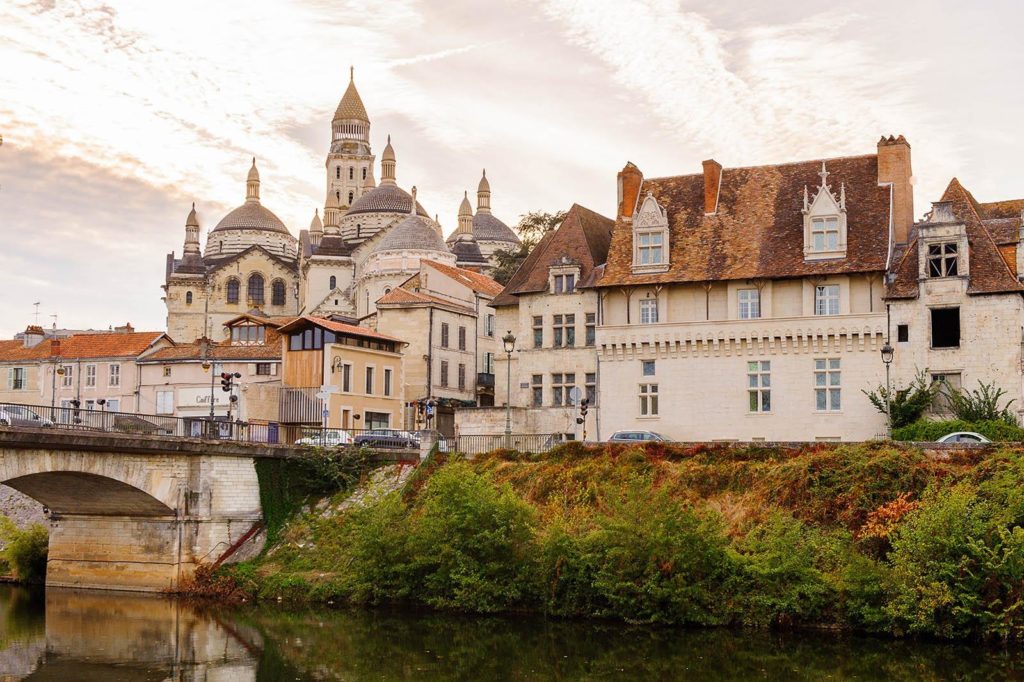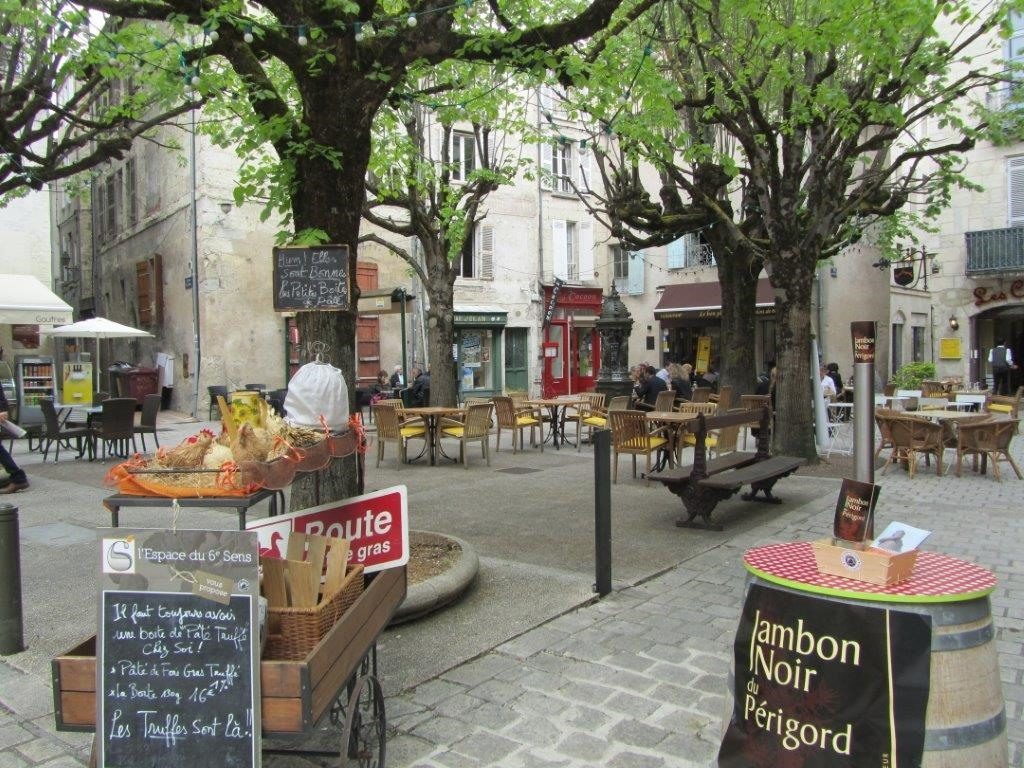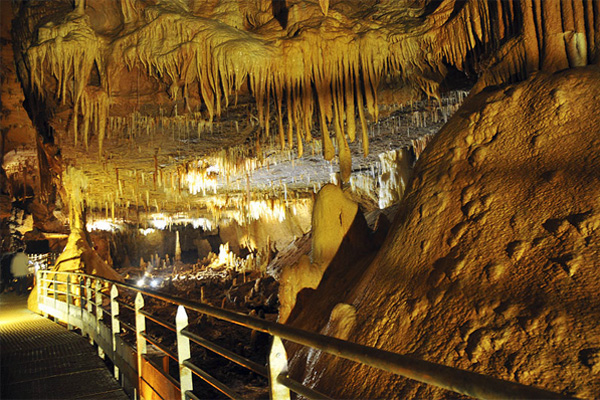Experience the beautiful scenery of the Perigord Vert
Domaine La Garenne is situated in a beautiful setting and is an excellent base for exploring the rich surroundings. The small village of Saint-Jean de Cole currently has a rating of 4.5 stars from over 200 reviews on TripAdvisor. Due to consistent and outstanding traveler reviews for attractions and restaurants, it has been awarded the TripAdvisor Certificate of Excellence.
From Domaine La Garenne, there are numerous options for visiting attractions. You can also choose to spend a day at the lake, where there is a lifeguard on duty during the high season and a small catering facility. Explore the caves in Villars or visit the gardens of Jumilhac. We’d be happy to list some other enjoyable options for you:
Brantôme
The Venice of the Périgord! Situated on an island, at the gates of the “Périgord Limousin” Natural Park, the charming town of Brantôme is one of the most beautiful towns in the Périgord Vert region. Its grand monastery, located on the banks of the Dronne River and protected by a high cliff, makes this building one of the most beautiful in the region.
One of the main highlights of the town of Brantôme is undoubtedly its natural surroundings. Nestled in the gentle hilly landscape of the Périgord Vert, Brantôme is nestled between two branches of the Dronne River, sheltered by a cliff where the magnificent monastery rests. A monastery that is over 1200 years old. The history of Brantôme dates back a long way. In prehistoric times, people lived in the overhanging cliffs carved by the Dronne. The “Dolmen de Peyrelevade” (Pierre Levée in old French: standing stone) still stands today as a testimony to religious events of that time. From the 8th century, Benedictine monks took advantage of the natural protection of the cliff to establish themselves there, and the abbey continued to grow. Tradition says it was consecrated by Charlemagne.
One of the most beautiful views of the monastery and the esplanade along it can be seen from the bridge over the Dronne, where many canoes sail in the summer. This bridge leads to the “Jardin des Moines,” a very beautiful park where you can feed the ducks.
One of the best times to visit Brantôme is during its famous market on Friday mornings. The town comes to life, offering the opportunity to taste some of the local gastronomic specialties of the Périgord.




Périgueux
Périgueux dates back to Roman times and has, since then, offered remnants of every bygone era to its visitors. The old city center is dominated by medieval streets adorned with authentic town palaces scattered throughout.
From Roman times, we have the Vesunna Tower and the Villa of Vesunna (Vesonne). The tower has been a characteristic feature of the city since its construction. Once, the tower was the heart of the grand temple that formed the center of Vesunna. In 1959, excavations led to the discovery of the remains of an ancient villa. Nowadays, a modern building protects the remnants of the old villa, allowing you to comfortably glimpse into antiquity.
In Périgueux, you can wander through the streets and alleys of Puy Saint Front, the city’s renowned cathedral. Don’t forget to stroll down the rue de Limogeanne, which is full of beautiful Renaissance buildings and town palaces – a favorite retreat for the nobility. Périgueux is an elegant provincial town, with shops catering to the prosperous residents of the region. Notably (or perhaps not surprisingly), the town places great emphasis on gastronomy. Everywhere you go, you’ll find shops catering to gourmands. After all, you are in the capital of the Périgord, famous for its exceptional cuisine.
In the medieval center, you’ll find the farmers’ market every day, and on Wednesdays and Saturdays, it expands into the “marches des saveurs” (market of flavors).
In a region where even the smallest villages host events during the peak tourist season, the capital city doesn’t lag behind. Here’s an overview of the recurring events, along with numerous other activities:
– Jazz concerts (Macadam Jazz) on Tuesday evenings in July and August.
– Flower festival in May.
– Night markets in July and August.
– Organ festival in July and August.
– Mimos, an international mime festival, at the end of July and beginning of August.
– New Orleans Jazz in early August.
– Baroque music in mid-August.
– International Cookbook Salon in November.
Other charming cities to explore nearby include Limoges and Thiviers.
Grotte de Villars
Grotte de Villars is a beautiful cave located in the municipality of Villars in the Dordogne region, near the town of Brantôme. Similar to the caves of Lascaux, Rouffignac, and Font-de-Gaume, this cave also features various wall paintings. Today, Grotte de Villars is considered one of the most popular caves in the Dordogne region. When you visit the cave, you will be guided through all its stunning features.
The visit to the cave includes a twenty-minute video about the cave’s history, followed by a guided tour lasting approximately three-quarters of an hour. During this tour, you will learn about this beautiful cave, from its discovery to the wall paintings and the incredibly stunning rock formations. While Grotte de Villars may be somewhat less well-known than the world-famous Lascaux cave, a visit to this magnificent cave is more than worthwhile!


The gardens of Jumilhac
In the seventeenth century, the Marquis of Jumilhac aimed to modernize his castle and bring it out of ancestral times. As a presence at the Court of Versailles, he was required to create gardens that matched his rank; these were 12 terraces that, through the transformation of the Rocky Spur serving as the seat of Jumilhac Castle, descended in stages to the island, which lies 45 meters below.
The gardens of Jumilhac were preserved until the beginning of the twentieth century. Unfortunately, the perils of World War I subjected this monumental work to damage to the point where they were gradually sold off in favor of vegetable gardens, orchards, or patches of wheat, much like the fate of the 120 orange trees in the orangery. Only the first two terraces overlooking the valley, where the deer trap resonates today, remain attached to the castle.
